Aleksander Gamayunov
DDPEN: Trajectory Optimisation With Sub Goal Generation Model
Jan 18, 2023Abstract:Differential dynamic programming (DDP) is a widely used and powerful trajectory optimization technique, however, due to its internal structure, it is not exempt from local minima. In this paper, we present Differential Dynamic Programming with Escape Network (DDPEN) - a novel approach to avoid DDP local minima by utilising an additional term used in the optimization criteria pointing towards the direction where robot should move in order to escape local minima. In order to produce the aforementioned directions, we propose to utilize a deep model that takes as an input the map of the environment in the form of a costmap together with the desired goal position. The Model produces possible future directions that will lead to the goal, avoiding local minima which is possible to run in real time conditions. The model is trained on a synthetic dataset and overall the system is evaluated at the Gazebo simulator. In this work we show that our proposed method allows avoiding local minima of trajectory optimization algorithm and successfully execute a trajectory 278 m long with various convex and nonconvex obstacles.
Conditioned Human Trajectory Prediction using Iterative Attention Blocks
Jun 29, 2022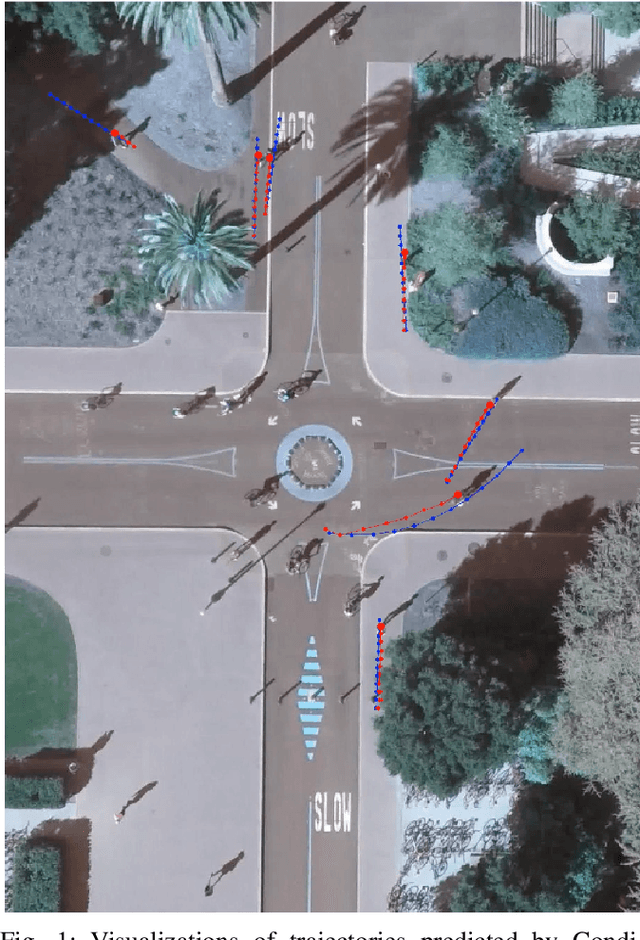
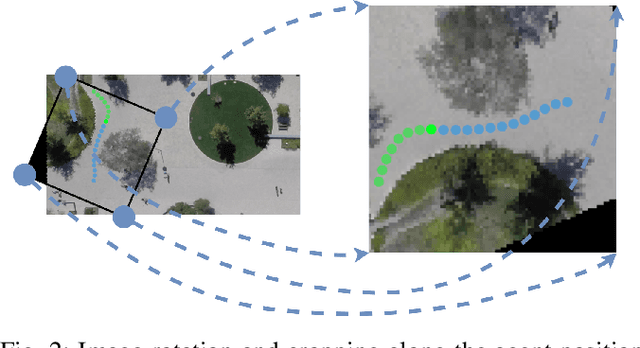


Abstract:Human motion prediction is key to understand social environments, with direct applications in robotics, surveillance, etc. We present a simple yet effective pedestrian trajectory prediction model aimed at pedestrians positions prediction in urban-like environments conditioned by the environment: map and surround agents. Our model is a neural-based architecture that can run several layers of attention blocks and transformers in an iterative sequential fashion, allowing to capture the important features in the environment that improve prediction. We show that without explicit introduction of social masks, dynamical models, social pooling layers, or complicated graph-like structures, it is possible to produce on par results with SoTA models, which makes our approach easily extendable and configurable, depending on the data available. We report results performing similarly with SoTA models on publicly available and extensible-used datasets with unimodal prediction metrics ADE and FDE.
Transformer based trajectory prediction
Dec 08, 2021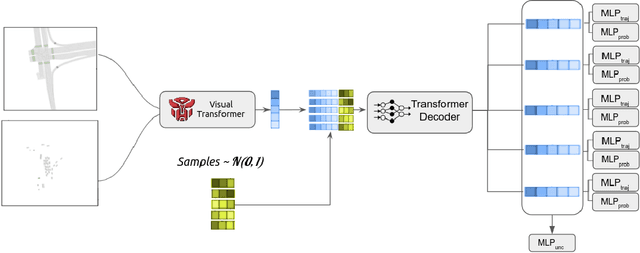

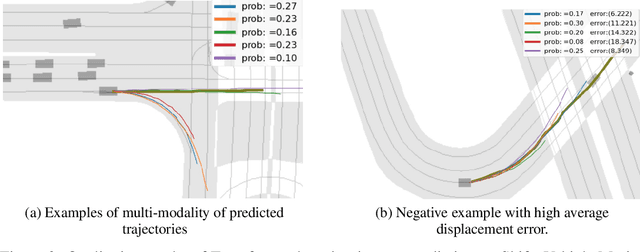
Abstract:To plan a safe and efficient route, an autonomous vehicle should anticipate future motions of other agents around it. Motion prediction is an extremely challenging task which recently gained significant attention of the research community. In this work, we present a simple and yet strong baseline for uncertainty aware motion prediction based purely on transformer neural networks, which has shown its effectiveness in conditions of domain change. While being easy-to-implement, the proposed approach achieves competitive performance and ranks 1$^{st}$ on the 2021 Shifts Vehicle Motion Prediction Competition.
CovarianceNet: Conditional Generative Model for Correct Covariance Prediction in Human Motion Prediction
Sep 07, 2021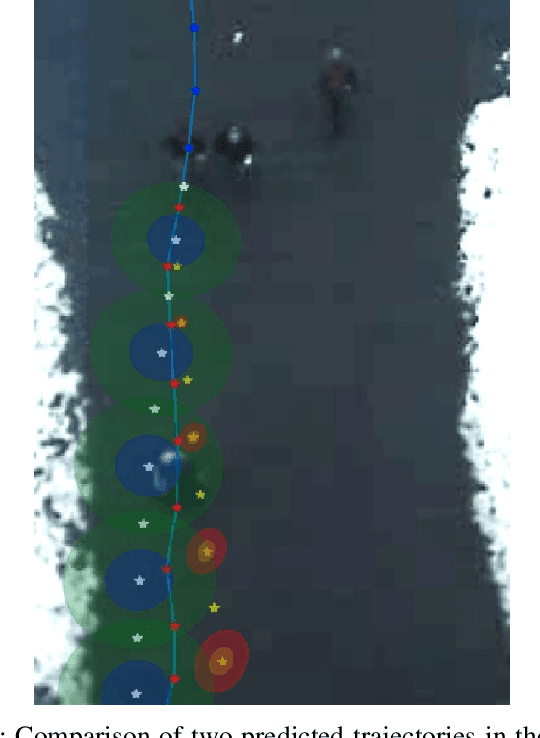
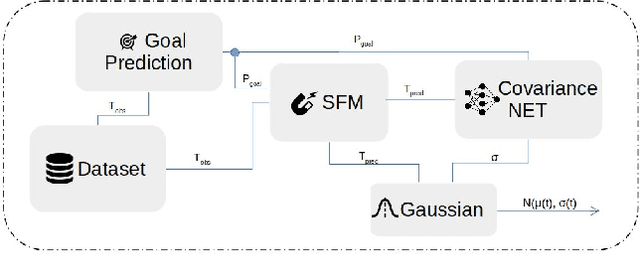
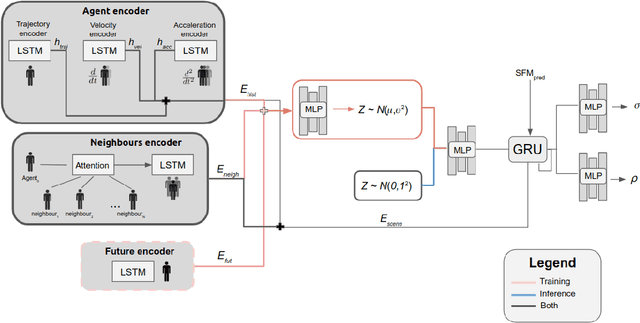
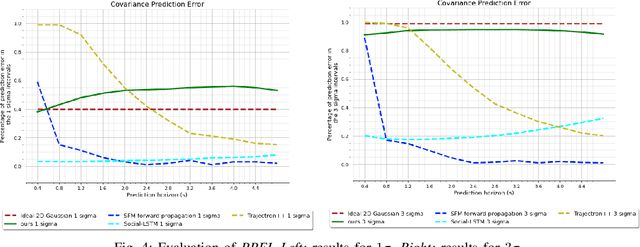
Abstract:The correct characterization of uncertainty when predicting human motion is equally important as the accuracy of this prediction. We present a new method to correctly predict the uncertainty associated with the predicted distribution of future trajectories. Our approach, CovariaceNet, is based on a Conditional Generative Model with Gaussian latent variables in order to predict the parameters of a bi-variate Gaussian distribution. The combination of CovarianceNet with a motion prediction model results in a hybrid approach that outputs a uni-modal distribution. We will show how some state of the art methods in motion prediction become overconfident when predicting uncertainty, according to our proposed metric and validated in the ETH data-set \cite{pellegrini2009you}. CovarianceNet correctly predicts uncertainty, which makes our method suitable for applications that use predicted distributions, e.g., planning or decision making.
 Add to Chrome
Add to Chrome Add to Firefox
Add to Firefox Add to Edge
Add to Edge